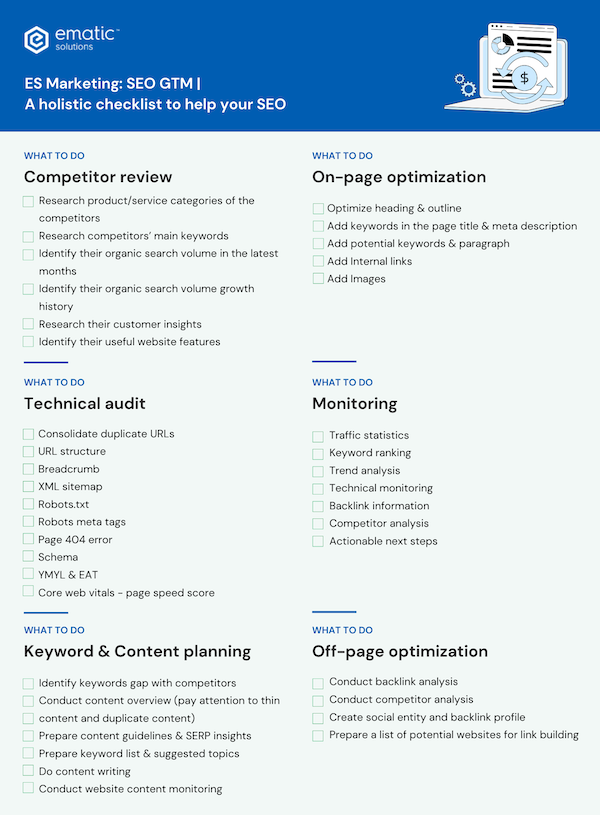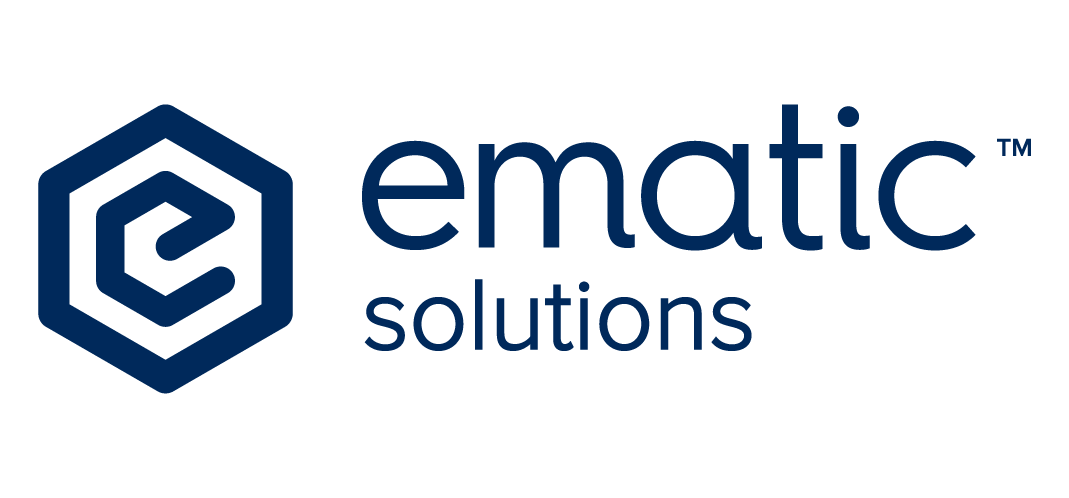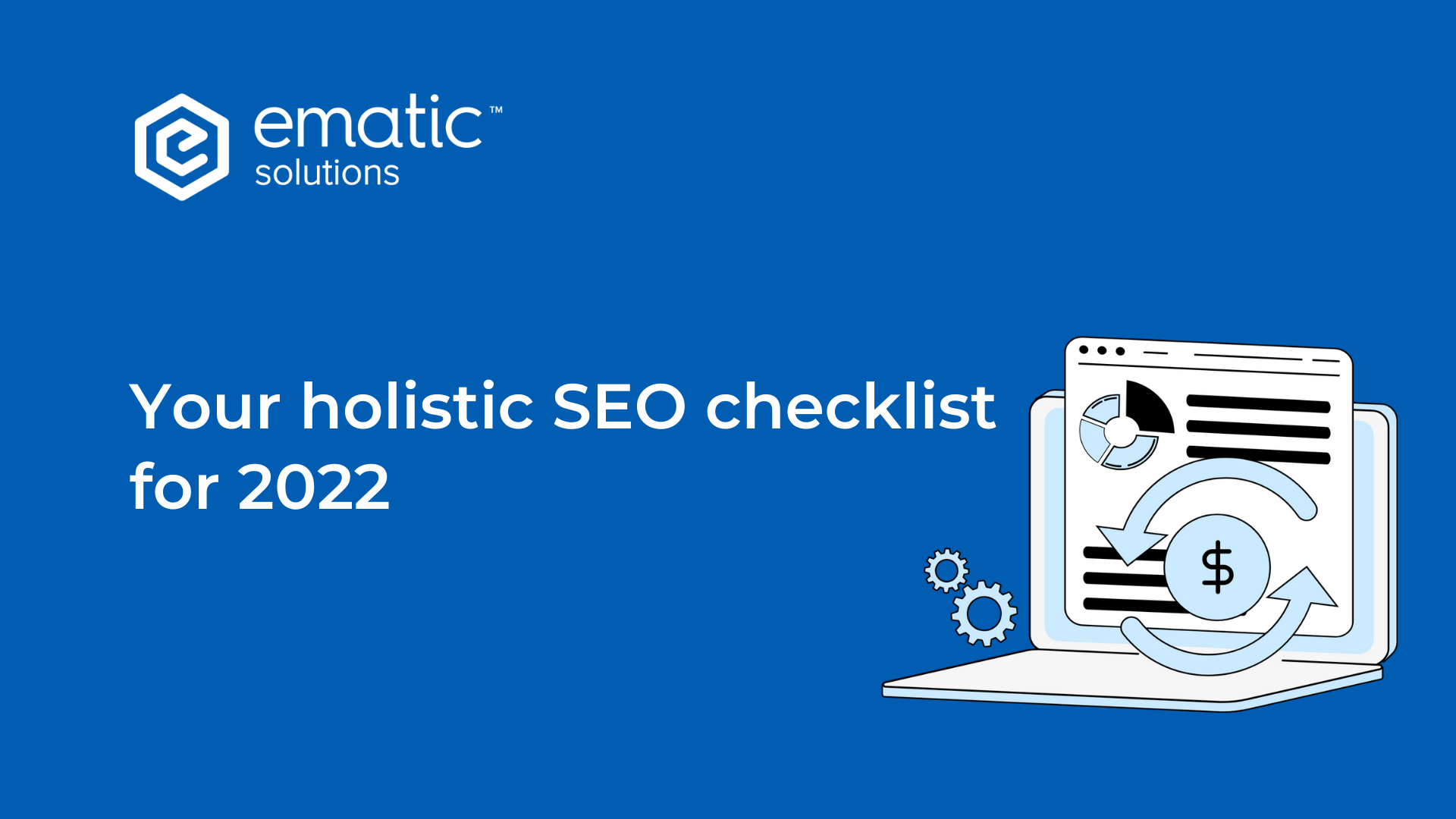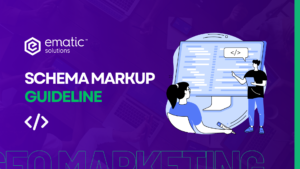SEO is far beyond just writing content with keywords we think our potential customers may fill in those little search bars in different search engines. It encompasses a whole range of different audits, analyses, and actionable plans. But not as complicated as it may sound, the process can be divided into 6 steps, each of which has a different set of checklists that we can easily follow.
Ematic has compiled those checklists below for you to have a quick look at your current SEO. In each of the steps, we also note some of the things (if any) that we do differently compared to other SEO agencies in the market. You can also contact us so that we can guide you through our own steps in a more in-depth session.

Download the checklist here.
Competitor Review
In fact, prior to this step, the first thing we need to do is to look at ourselves in general. Some questions we may ask include: what our strategy towards SEO is, what our target market is, how we are doing with our website, whether or not some of the popular keywords related to our products/services show up in search engines, etc… Although detailed analyses of our own SEO performance will be incorporated into later steps, this quick check will probably give us a rough idea of our current state and hopefully help us set some expectations for the project.
There is an old saying that goes: “He who sees through life and death will meet most success.” Indeed, when we can identify our competitors, what they have been doing, and where they are standing right now in the market, we can choose to follow best practices or decide to go our own way for differentiation.
Doing competitor analysis is one of the best ways to identify customer insights through keyword research. This also helps us figure out what functions on their websites may bring the most value to their (and our) customers. The more information we obtain, the more options we have when we think about our strategy to compete. All in all, there surely is a reason why our competitors showed up in the top search results, right?
At Ematic, the first thing we do when it comes to SEO is to conduct thorough research on potential competitors. Below are some headings that you can choose to follow for your own quick competitor check.
What to do
- Research product/service categories of the competitors
- Research competitors’ main keywords
- Identify their organic search volume in the latest months
- Identify their organic search volume growth history
- Research their customer insights
- Identify their useful website features
Technical Audit
A website is a place where we showcase our products/services, direct our customer journeys, pin featured offerings, display sale promotions, or collect customer info from sign-up forms. Needless to say, it is the single most important asset for those who rely on websites to sell.
As a result, helping search engines understand our products/services and customers is crucial. Only then, search engines can know who our potential customers are and suggest our website to match with their searched keywords.
The list below suggests several aspects you can look into when it comes to optimizing your website for better search engine optimization.
What to do
- Consolidate duplicate URLs
- URL structure
- Breadcrumb
- XML sitemap
- Robots.txt
- Robots meta tags
- Page 404 error
- Schema
- YMYL & EAT
- Core web vitals – page speed score
Keyword & Content Planning
Search engines were born for users to get answers to various problems in their lives. Therefore, we need to figure out exactly what problems our target audience is currently having; from that, create content that helps them identify and solve their problems through using or buying our products or services.
One important thing to note is that when building content, we must first focus on bringing the RIGHT and VALUABLE information to our customers, rather than the length of the article. Even though word count is one criterion Google uses to evaluate website content, this should be the last step for optimization and improvement to meet the guideline, rather than the initial focus when starting to draft our pieces of content.
Also, tactics to fool Google’s algorithm may bring short-term success. However, in the long run in case Google updates or changes its evaluation criteria (which is the thing Google does quite often), content that lacks insights into helping customers solve their problems will surely become useless and fall out of the top positions.
Besides the mentioned issues, below are the steps you can follow for your keyword & content planning phase:
What to do
- Identify keywords gap with competitors
- Conduct content overview (pay attention to thin content and duplicate content)
- Prepare content guidelines & SERP insights
- Prepare keyword list & suggested topics
- Do content writing
- Conduct website content monitoring
On-page Optimization
“How much traffic does our website have?” – This is a very easy question since we can check it every day on Google Analytics. Now, let’s tweak it a little bit: “How many landing pages on our website bring in that amount of traffic?” – This is tough, right?
On average, only 5% of the landing pages on our website bring in 80% of the total traffic. The other 20% is brought in through another 25% of the landing pages. This indicates that a noticeable number of landing pages (70%) contribute 0 traffic to the website! As a result, continuously conducting on-page optimization is a must to make sure we keep bringing a good amount of traffic to our ecosystem.
The principle of this phase is, therefore, to identify potential keywords and populate them in relevant articles. At Ematic, we have a special approach in this step for better management and optimization, but you can take the checklist below as the starting point.
What to do
- Optimize heading & outline
- Add keywords in the page title & meta description
- Add potential keywords & paragraph
- Add Internal links
- Add Images
Off-page Optimization
An off-page backlink is a connection created when a website is linked with another one. This kind of connection is very valuable for SEO because it shows that one website has cast one vote of confidence in another website. The more votes our website has, the more credibility we have with search engines.
If technical and content are like the expertise and experience of a working professional, backlink is the circle of relationships that this person has. We can’t be successful just by our expertise and experience. Likewise, we can’t just stop after optimizing content and technical, but rather keep building up our backlink reservoir to have a better functioning and searchable website.
Also, just like in relationships, quality outweighs quantity. We don’t need to build as many backlinks as possible. Instead, focusing on a reasonable number of high-quality backlinks yields even better results.
Again, you can start off with the checklist below. But when you wonder where to find high-quality backlinks, Ematic is here to help.
What to do
- Conduct backlink analysis
- Conduct competitor analysis
- Create social entity and backlink profile
- Prepare a list of potential websites for link building
Monitoring
Normally, we see a lot of charts with trendlines predicting the growth rates of 10%, 15%, or 20%. That becomes the target that most of us will be trying to hit at the end of every month. However, in real life, customer buying and searching behavior can be different season by season based on sale campaigns, holidays, or weather, making tracking with the mentioned approach is far beyond practical.
This gives rise to Ematic’s monitoring method by growth season. And this is quite helpful because now rather than running forward blindfolded, we can start distributing our effort wiser as we know when to focus on content creation and backlink building, and when to do on-page optimization to push sales.
The checklist below can somehow show you the way to do your own monitoring.
What to do
- Traffic statistics
- Keyword ranking
- Trend analysis
- Technical monitoring
- Backlink information
- Competitor analysis
- Actionable next steps
Above are the checklists that hopefully can help you do your own search engine optimization. Yet whenever you feel like you are at the stage of full-speed growth and require more complicated and holistic SEO campaigns, Ematic is always at your service. Contact us and see what we can do together.





